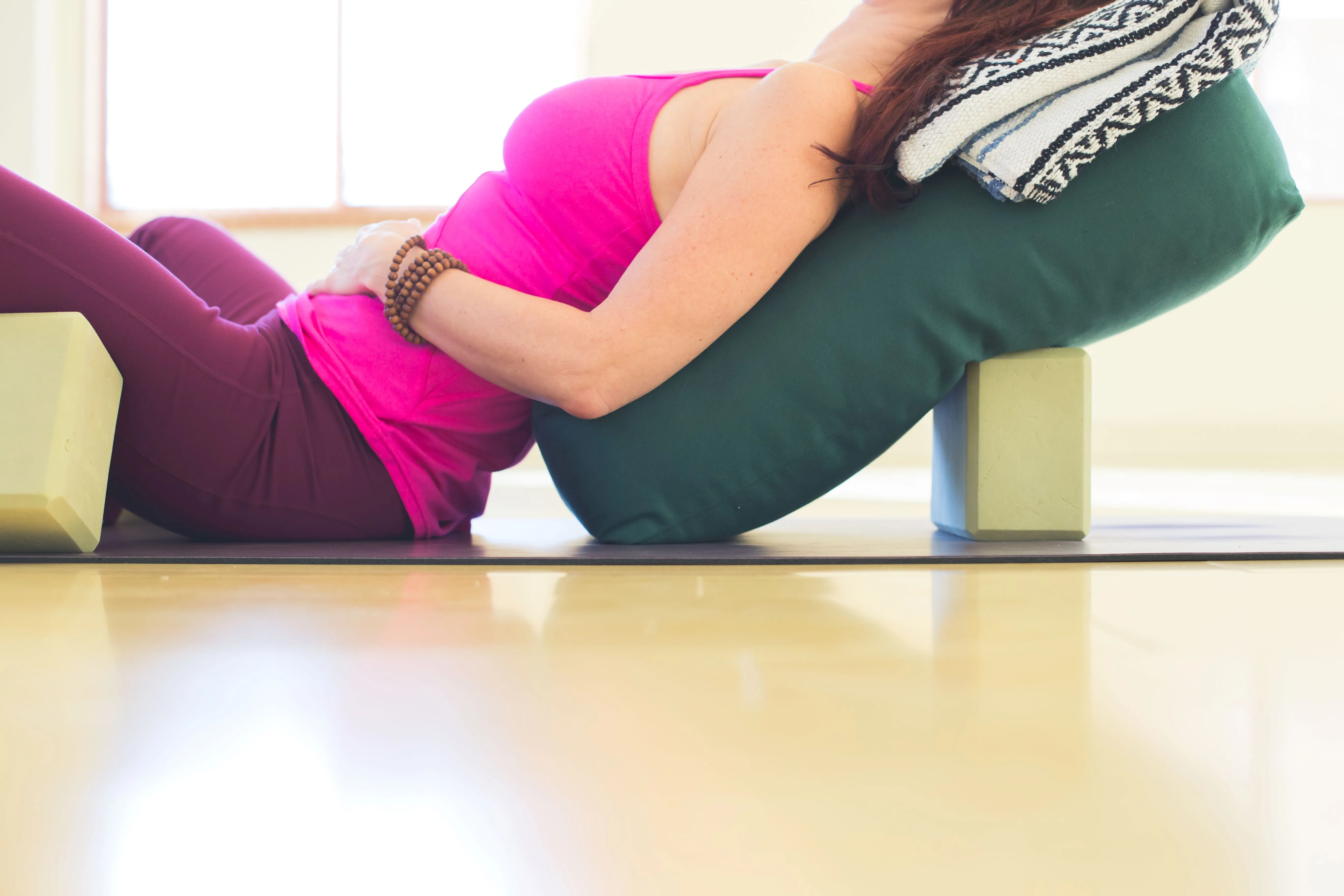What’s the difference between Yin Yoga and Restorative Yoga? Does using props mean we’re doing Restorative Yoga?
These are frequent questions in my Yin Yoga & Meditation trainings. And like so many questions in life, the answer is…it depends!
Although the shapes of the poses in Yin Yoga and Restorative Yoga might look very similar, they are different practices with different intentions and different benefits. Yin Yoga and Restorative Yoga exist on a continuum, and that continuum is one of sensation.
Both practices use props to help the practitioner experience different sensation levels. Restorative poses use props to find a place of little to no sensation – you feel like you’re floating on a cloud. In Yin Yoga, we use props to find mild sensation.
The work of a Yin pose is safe and effective when the sensations felt are mild. Yin can sometimes feel a bit uncomfortable, but it should never be painful. A gentle, reasonable amount of sensation will typically allow the practitioner to breathe well, relax the muscles, stay in the shape for a bit of time, and maintain a mindful attention on their inner experience.
Our bodies are unique and can change class to class, moment to moment. In Yin, props are used in many ways to assist us to honor those individualized needs. Props can make poses more accessible. For example:
✨ Sitting on a block might allow us to safely fold forward toward an appropriate sensation without over-loading our lumbar spine
✨ Using a strap to lengthen the arms might help us reach a part of our body without straining.
Props can also help to nurture sensitive areas. Kneeling on a blanket for extra cushion is a good example of this when kneeling right onto the mat causes painful compression.
Props can also support one part of the body to benefit another:
✨ Placing blocks under the knees may help us access the hamstrings without forcing the knee joints
✨ Trying a supine version of a pose to use the floor as a prop when a back sensitivity prevents us from doing a seated version
Props can also help us go deeper into a pose to find mild sensation. Fish Pose variations offer a good example, where we might position a bolster under the upper back to accentuate the opening experienced in the upper back, chest, and even the shoulders.
Injury, aging, specific parts of the body we may or may not want to focus on all contribute to how we use props in any particular pose. Each of our skeletons are unique, so how each of us uses props to find and maintain the appropriate level of sensation in a pose is unique to each of us. The same prop that can remove sensation in Restorative can create sensation in Yin. It all comes down to our body and our intention.
As teachers, we can discuss, inform, cue, support, and guide but ultimately the pose experience is for the student to create and follow, because only the practitioner knows what they're feeling. It's very unlikely we can know exactly what sensation a student is feeling based only on how their pose looks. Like happiness, it's an inside job.
As a yoga teacher and someone who trains other teachers, it’s so important to me that practitioners are empowered with permission to honor their body's needs in alignment with their intention and equip them with the pose options, modifications, and substitutes to help them do that effectively and with kindness.
There are limitless creative options to use a wide variety of props, the wall, and the floor to find your own best posture and the amount of sensation you desire. Poses aren't ends, they're means...to strengthen the body, yes, but also to open and free the energy, mind, and heart, and bring kindness there.
More than just poses, yoga is a journey to unlock the power and peace within you and share your light with the world.

To learn more about Yin Yoga, join me for my next live online 40HR Yin Yoga & Meditation Training - details are here.



